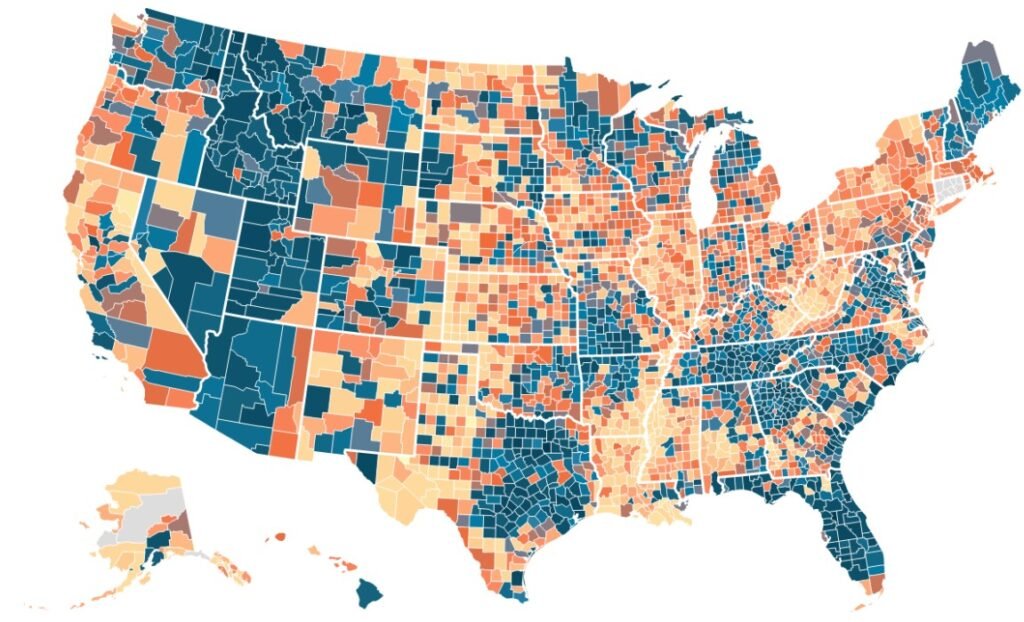The US population increased by 0.5% in 2023, reaching 334,914,895 people, according to the latest data released by the US Census Bureau. This is the largest population gain since 2018, driven by fewer deaths and rebounding immigration.
The South, which is the most populous region in the nation, accounted for 87% of the population growth in 2023, adding more than 1.4 million residents. The region now has more than 130 million people, or nearly 39% of the total US population.
The main factors behind the South’s growth were domestic migration and international migration. More than 706,000 people moved to the South from other parts of the country, while nearly 500,000 people came from abroad.
Texas and Florida were the top two states in terms of population growth, adding more than 473,000 and 365,000 people, respectively. South Carolina and Florida were also the fastest-growing states, with their populations rising by 1.7% and 1.6%, respectively.

The Midwest Reverses Two Years of Decline
The Midwest, which had experienced population losses in 2021 and 2022, saw a moderate increase of 0.2% in 2023, adding more than 126,000 residents. The region now has more than 69 million people, or about 21% of the total US population.
The Midwest’s growth was mainly due to fewer people leaving the region and more people coming from abroad. Indiana, Ohio and Minnesota all saw population gains in 2023.
The West Slows Down Its Growth
The West, which had been the fastest-growing region in the nation before the pandemic, slowed down its growth in 2023, adding more than 137,000 residents, or 0.2%. The region now has more than 80 million people, or about 24% of the total US population.
The West’s growth was mainly due to natural increase, or the excess of births over deaths, and international migration. Alaska and New Mexico saw population gains after losing population in 2022, while California, Oregon and Hawaii saw their population losses decrease.
The Northeast Remains Stable
The Northeast, which is the least populous and slowest-growing region in the nation, remained stable in 2023, adding more than 16,000 residents, or 0.03%. The region now has more than 55 million people, or about 16% of the total US population.
The Northeast’s growth was mainly due to international migration, which offset the negative effects of natural decrease and domestic migration. New York, Pennsylvania and Massachusetts all saw population gains in 2023.
Implications for the Future
The US population growth in 2023 reflects a partial recovery from the impacts of the COVID-19 pandemic, which caused a record-low increase of 0.2% in 2021 and a historically low increase of 0.4% in 2022. The pandemic also affected the 2020 census, which showed the second-lowest growth rate in US history, at 7.4%.
The Census Bureau projects that the US population will continue to grow slowly in the coming decades, reaching a peak of nearly 370 million in 2080, before declining slightly to 366 million in 2100. The projections are based on assumptions about fertility, mortality, migration and other factors.
The population trends have implications for the political, economic and social landscape of the nation, affecting the distribution of congressional seats and electoral votes, the allocation of federal funds, the demand for public services and infrastructure, the diversity and aging of the population, and the environmental and health challenges.
